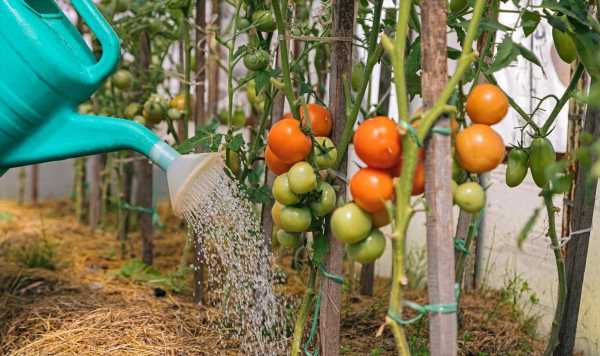Gardening: Homebase shares tips to help grow tomatoes
We use your sign-up to provide content in ways you’ve consented to and to improve our understanding of you. This may include adverts from us and 3rd parties based on our understanding. You can unsubscribe at any time. More info
Getting started can be a huge hurdle when it comes to growing tomatoes, and so Craig Wilson, a gardening expert from Gardeners Dream, has shared top tips on growing the “perfect” tomatoes at home. While the best tomatoes are grown early, there is still plenty of time to get a harvest this year. It takes around five months from seedling to harvest, so gardeners should start preparing as soon as possible.
The expert said: “To grow tomatoes successfully from seeds, you’ll need some starter trays and around three to four inch pots to transfer them into after they begin to grow.
“You’ll also need rich, fertile soil or peat-free potting compost and a good spot with plenty of sun, around eight hours a day and shelter.
“For beginners, we recommend tomato moneymaker seeds. They are one of the most reliable varieties of tomatoes, popular for being reliable and producing heavy crops of delicious tomatoes.”
To begin, Britons should sow their seeds between January and April, around a quarter of an inch deep in the soil.

Make sure to use deep pots or trays, under glass, with a temperature above 18C, around 25C is best, according to the expert.
Tomatoes are sensitive to the cold and love the heat, which helps them grow. Make sure to keep the soil moist but be careful not to overwater, which makes the soil soggy and “inhibits growth”.
Overwatering is a common mistake which can kill the plant in some cases, so make sure to avoid this.
The expert continued: “Once seedlings are large enough to handle, around five inches tall, transfer them into individual containers or a seedbed.
Don’t miss…
Houseplant expert’s crucial jobs to allow them to ‘thrive’ in spring [COMMENT]
Garden laws to avoid causing ‘conflict’ with neighbours [INSIGHT]
Four viral cleaning methods to avoid – could ‘invalidate’ insurance [EXPLAINER]
“Once the last frost has passed, it is safe to plant them outside. If night temperatures drop below freezing, keep them inside for now.”
To ensure tomatoes have the best chance of growing “plump and juicy”, the gardening pro said Britons need to check their soil is of the highest quality possible.
They can do this by removing any large weeds and debris, treating soil with weedkiller, digging over the soil to a depth of at least 12 inches, then raking it until the ground is level.
This aerates the soil, which helps oxygen and moisture reach the roots to encourage growth. Before growing, Britons should also water the soil and work in a fertiliser.

Craig continued: “You can create your compost using old fruits, vegetables and coffee grounds, which will help fertilise your plants at no extra cost.
“Dig deep enough for the soil to cover about two thirds of the plant, encouraging strong roots and healthy growth. Each plant should be around 20 inches apart in rows, and the spacing of each row should be double that.
“Make sure to water the plants consistently. When watering, check the soil’s moisture – the water should go around 10 inches deep.
“Tomato trellises and support stakes can help your plants grow. Don’t grow them near cabbage, fennel, corn or potatoes, as this will harm the tomatoes’ growth.”

Tomatoes need regular maintenance in order for them to thrive, which includes watering and feeding regularly.
Gardeners should feed weekly with a high-potash fertiliser once the plants begin to flower and remove side shoots when they appear too. They can also be pruned, which helps to reduce the risk of disease, according to the gardening expert.
He added: “It is safe to harvest tomatoes in the summer, from July to October. Tomatoes ripen after picking but wait until they are beginning to change colour before harvesting.
“They should come off the vine easily. If not quite ripe, keep them in a well-ventilated area at home until they are ready to eat.”
Source: Read Full Article
